Reliable Redundant Resilient
0 likes278 views
Florian Haas, Fri, 4/20, 11:30 High Availability on OpenStack presentation
1 of 48
Downloaded 38 times














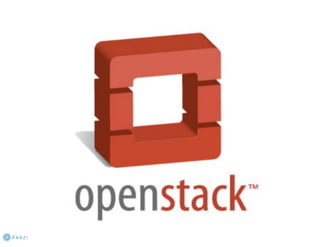
















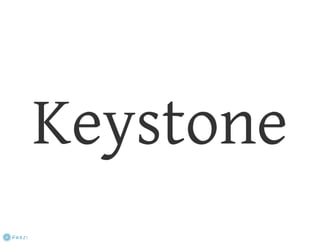


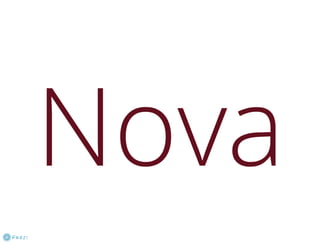




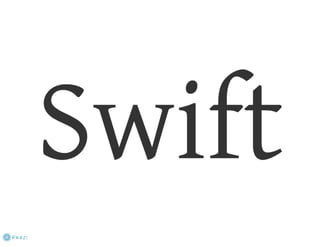
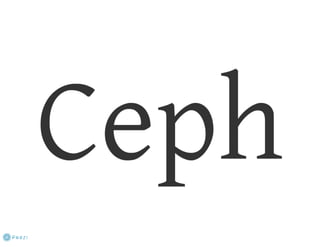






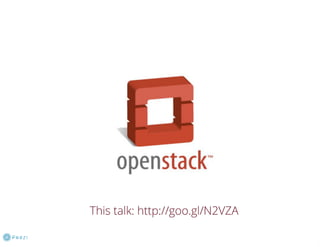
Ad
Recommended
MySQL High Availability Sprint: Launch the Pacemaker
MySQL High Availability Sprint: Launch the Pacemakerhastexo
╠²
This document provides instructions for a MySQL high availability sprint. It outlines setting up various components of the Linux HA stack including Pacemaker for cluster resource management, Corosync for cluster messaging, and DRBD for storage replication. It then provides step-by-step instructions for configuring resources like a floating IP address, DRBD device, filesystem, and MySQL, and grouping them together for high availability. The document concludes by providing further information and a way to provide feedback on the sprint.Mit OpenStack zur eigenen Cloud (GLT 2012)hastexo
╠²
Das Dokument besch├żftigt sich mit der Implementierung von OpenStack zur Schaffung einer eigenen Cloud-Infrastruktur mit verschiedenen Komponenten wie Compute, Networking und Object Storage. Es behandelt Themen wie Automatisierung, Hochverf├╝gbarkeit und das Einrichten von virtuellen Maschinen. Der Autor, Martin G. Loschwitz, zitiert auch Informationen zur ersten Version von OpenStack, die 2010 ver├Čffentlicht wurde.Fencing and Maintaining Sanity in High Availability Clusters
Fencing and Maintaining Sanity in High Availability Clustershastexo
╠²
The document summarizes the ancient Greek practice of ostracism in Athens in the 5th century BCE. Citizens would gather once a year and write the name of another citizen on a pottery shard. The person with the most votes would be banished from Athens for 10 years, with the goal of removing those who misbehaved and having a cleansing effect on society. After 10 years, the banished person was allowed to return without stigma.MySQL High Availability Deep Dive
MySQL High Availability Deep Divehastexo
╠²
The document provides a comprehensive tutorial on setting up MySQL high availability using various components including DRBD, Corosync, and Pacemaker. It outlines the necessary steps for creating and configuring clusters, managing resources, and monitoring states for MySQL replication. Additionally, it includes links to further resources and knowledge bases for participants seeking additional information or assistance.Mit OpenStack zur eigenen Cloud (LinuxTag 2012)hastexo
╠²
Das Dokument behandelt die Nutzung von OpenStack zur Erstellung einer eigenen Cloud, inklusive der verschiedenen Cloud-Computing-Modelle wie IaaS, SaaS und PaaS. Es beschreibt die wesentlichen Komponenten von OpenStack, darunter Dashboard, Compute, Networking und Object Storage, sowie Automation und Hochverf├╝gbarkeit. Der Autor, Martin G. Loschwitz, demonstriert eine Live-Demo und bietet zus├żtzliche Ressourcen und Kontaktinformationen an.OpenStack Coopetition Panel
OpenStack Coopetition PanelCloud Native Day Tel Aviv
╠²
The document lists participants of an OpenStack competition panel, including representatives from various companies such as HP, Mirantis, Red Hat, and Canonical. Key individuals mentioned are Alex Freedland, Monty Taylor, Florian Haas, Andrew Cathrow, and Nicolas Thomas. The focus appears to be on collaboration and discussion regarding OpenStack initiatives.Storage with Ceph (OSDC 2013)
Storage with Ceph (OSDC 2013)hastexo
╠²
This document discusses the scale-out storage solution Ceph. Ceph provides a distributed object store and file system that allows for scalable storage. It uses RADOS, which is a redundant, autonomic, distributed object store. Ceph has two main components - OSDs, which store data on disks, and MONs which monitor the cluster and maintain metadata. Ceph uses a technique called CRUSH to intelligently place data and replicas across the distributed system. It supports various use cases like virtualization, cloud storage, and large scale storage needs.ą¤čĆąĖą╝ąĄčĆ ą┐čĆąŠąĄą║čéą░ ą┤ąŠą╝ą░ Z500
ą¤čĆąĖą╝ąĄčĆ ą┐čĆąŠąĄą║čéą░ ą┤ąŠą╝ą░ Z500Z500projects
╠²
ąöąŠą║čāą╝ąĄąĮčé ąŠą┐ąĖčüčŗą▓ą░ąĄčé ą┐čĆąŠąĄą║čé ąĖąĮą┤ąĖą▓ąĖą┤čāą░ą╗čīąĮąŠą│ąŠ ąČąĖą╗ąŠą│ąŠ ą┤ąŠą╝ą░, ą║ąŠč鹊čĆčŗą╣ čüąŠąŠčéą▓ąĄčéčüčéą▓čāąĄčé ą┤ąĄą╣čüčéą▓čāčÄčēąĖą╝ čüčéčĆąŠąĖč鹥ą╗čīąĮčŗą╝, čüą░ąĮąĖčéą░čĆąĮčŗą╝, ą┐čĆąŠčéąĖą▓ąŠą┐ąŠąČą░čĆąĮčŗą╝ ąĖ 菹║ąŠą╗ąŠą│ąĖč湥čüą║ąĖą╝ ąĮąŠčĆą╝ą░ą╝. ąÆ ą┐čĆąŠąĄą║č鹥 čāą║ą░ąĘą░ąĮčŗ ą╝ą░č鹥čĆąĖą░ą╗čŗ, ą║ąŠąĮčüčéčĆčāą║čéąĖą▓ąĮčŗąĄ ąĖ ąŠą▒čŖąĄą╝ąĮąŠ-ą┐ą╗ą░ąĮąĖčĆąŠą▓ąŠčćąĮčŗąĄ čĆąĄčłąĄąĮąĖčÅ, ą░ čéą░ą║ąČąĄ čéčĆąĄą▒ąŠą▓ą░ąĮąĖčÅ ą║ ą▒ąĄąĘąŠą┐ą░čüąĮąŠčüčéąĖ ąĖ ą║ą░č湥čüčéą▓čā ąĖčüą┐ąŠą╗čīąĘčāąĄą╝čŗčģ ą╝ą░č鹥čĆąĖą░ą╗ąŠą▓. ąÆ ąĮąĄą╝ čéą░ą║ąČąĄ čāą┐ąŠą╝ąĖąĮą░čÄčéčüčÅ č湥čĆč鹥ąČąĖ ąĖ čüą┐ąĄčåąĖčäąĖą║ą░čåąĖąĖ, ą▓ č鹊ą╝ čćąĖčüą╗ąĄ ą┤ą░ąĮąĮčŗąĄ ą┐ąŠ ąĖąĮąČąĄąĮąĄčĆąĮčŗą╝ čüąĄčéčÅą╝ ąĖ č鹥čģąĮąĖą║ąŠ-菹║ąŠąĮąŠą╝ąĖč湥čüą║ąĖąĄ ą┐ąŠą║ą░ąĘą░č鹥ą╗ąĖ ąŠą▒čŖąĄą║čéą░.Nova, Folsom presentation, Compute PTL
Nova, Folsom presentation, Compute PTLlaurabeckcahoon
╠²
Vishvananda Ishaya presented the state of the OpenStack Compute (Nova) project. Nova is now stable and operational in real deployments. For the upcoming Folsom release, plans include breaking out block storage and network into separate projects/repositories while maintaining compatibility. Other goals are improving AWS compatibility, command line interfaces, operational support, security, stability, scaling and careful migration between releases.Rackspace Open-cloud, Engates, Interrante Keynote
Rackspace Open-cloud, Engates, Interrante Keynotelaurabeckcahoon
╠²
Rackspace has launched a new private cloud platform called Rackspace Cloud on OpenStack that provides highly scalable infrastructure and networking capabilities powered by OpenStack. It offers mission critical applications, optimized databases, and hybrid connectivity options while continuing Rackspace's tradition of fanatical support.DOE Magellan OpenStack user story
DOE Magellan OpenStack user storylaurabeckcahoon
╠²
The document summarizes Magellan's experiences with OpenStack as a cloud computing platform for high performance computing workloads. Initial testing found stability and scalability issues with Eucalyptus, but OpenStack performed much better. A production OpenStack deployment was established to support scientific computing projects. Further work optimized networking performance, achieving near-wire speed wide area data transfers of 95 Gbps using OpenStack. The results demonstrate OpenStack's potential for on-demand high performance computing and data-intensive workloads.NICTA, Disaster Recovery Using OpenStack
NICTA, Disaster Recovery Using OpenStacklaurabeckcahoon
╠²
This document discusses building a disaster recovery solution using OpenStack. It outlines the goals of providing a configurable warm standby solution with a known recovery point objective (RPO) and reduced recovery time objective (RTO) to minimize business impact. The document describes challenges in replicating an application across clouds while preserving the running environment. It provides an overview of the disaster recovery process using OpenStack, including taking snapshots, creating volumes, and mounting new instances. Optimizations discussed include incremental backups and parallel transfers to improve large data transfer speeds across cloud datacenters for disaster recovery.OpenStack NASA
OpenStack NASAlaurabeckcahoon
╠²
NASA is increasingly embracing cloud computing and exploring options for delivering enterprise cloud services. It aims to become a wise consumer of commercial cloud services while also innovating how security is handled in the cloud. While some NASA applications have already been successfully run in commercial clouds, legacy applications can be difficult to migrate. NASA is working to understand which types of applications are best suited to the cloud model. It is also learning from various cloud piloting activities and evaluating economics to determine the most prudent uses of cloud computing.Chris Kemp Nebula Keynote
Chris Kemp Nebula Keynotelaurabeckcahoon
╠²
Nebula, Inc. is a cloud computing company founded by Chris C. Kemp. It provides an open source cloud computing platform called "The Stack" which includes components for compute, storage, networking, identity management, and more. The Stack aims to serve as an ecosystem connecting various customers, integrators, infrastructure providers and manufacturers. Nebula believes The Stack and its components represent the future of cloud computing.Virtual Data Centers with OpenStack Quantum
Virtual Data Centers with OpenStack Quantumlaurabeckcahoon
╠²
The document discusses building multi-tenant virtual data centers with Quantum that abstract away physical infrastructure complexity and provide application developers with on-demand, self-service access to compute, storage, and networking resources in a simple and consistent manner across private, public and hybrid clouds. It explores how to achieve the benefits of virtualization without the complexity of underlying physical infrastructure and addresses important questions around abstraction, exposure versus hiding of capabilities, and planning for future innovation.Radio Free Asia
Radio Free Asialaurabeckcahoon
╠²
Radio Free Asia's mission is to provide accurate news to countries without free press by broadcasting in local languages. It broadcasts to China, Tibet, North Korea, Vietnam, Cambodia, Laos, and Burma. RFA adheres to journalistic standards of objectivity and aims to serve as a model for emerging media in Asia. The Freedom2Connect project funds cooperation between anti-censorship developers to build shared infrastructure and promote best practices.Integrating OpenStack to Existing infrastructure
Integrating OpenStack to Existing infrastructurelaurabeckcahoon
╠²
- The document discusses integrating OpenStack as an IaaS solution into Sina's existing infrastructure to support its business needs. Sina operates China's largest web portal and microblogging service with over 300 million users.
- Key challenges discussed include network deployment, security considerations, load balancing, and evaluating OpenStack's Swift storage service. Specific network topologies and security enhancements developed are outlined.
- Contributions from integrating OpenStack include developing billing and monitoring systems called Kanyun and Dough to track usage and costs across the new infrastructure.HP Open Stack Keynote 4 18_2012 final
HP Open Stack Keynote 4 18_2012 finallaurabeckcahoon
╠²
The document discusses HP's involvement in cloud computing and OpenStack. It notes that HP is a top contributor to OpenStack, contributing over 13,000 lines of code. It is also the 2nd largest contributor to the Swift project and a top 3 contributor to several other OpenStack projects. The document promotes HP's public cloud services which are based on OpenStack and will be opening for public beta on May 10th. It describes HP's plans to build an ecosystem of partners for its cloud services and notes ways it aims to improve the developer experience including APIs, bindings and CLIs.Deutsche telekom
Deutsche telekomlaurabeckcahoon
╠²
1) Deutsche Telekom is launching a BusinessMarketplace platform to provide SMB customers easy access to cloud applications. The platform will use OpenStack as the underlying infrastructure layer.
2) The BusinessMarketplace will offer a curated selection of third-party applications that are secured, integrated and managed by Deutsche Telekom on behalf of customers. This provides customers compliance with German regulations.
3) For partners, the BusinessMarketplace provides a new sales channel to reach Deutsche Telekom's over 3 million SMB customers. The OpenStack infrastructure also allows partners to more easily integrate their applications and have them hosted on a stable, scalable platform.Open stack private cloud panel
Open stack private cloud panellaurabeckcahoon
╠²
The document summarizes a private cloud panel discussion with the following key points:
- The panelists included Ryan Lane from Wikimedia, Jan Drake from Disney, Ross Lillie from Motorola Solutions, and Narayan Desai from Argonne National Laboratory.
- They discussed the state of private clouds and where the industry is currently at with private cloud adoption.
- Contact information was provided for an OpenStack Operators mailing list for further discussion.Open stack private cloud panel
Open stack private cloud panellaurabeckcahoon
╠²
The document summarizes a private cloud panel discussion with the following key points:
1. The panelists included Ryan Lane from Wikimedia, Jan Drake from Disney, Ross Lillie from Motorola Solutions, and Narayan Desai from Argonne National Laboratory.
2. Contact information was provided for an OpenStack Operators Mailing List for further discussion.
3. The discussion wrapped up by asking where attendees are in their private cloud journey.Hp gavin pratt - open stack networking presentation
Hp gavin pratt - open stack networking presentationlaurabeckcahoon
╠²
The document discusses networking with OpenStack and HP Converged Cloud. It outlines what customers are asking for, including speed, business innovation, IT agility, and financial management. It then discusses the evolution from traditional IT infrastructure to private, managed, and public clouds. The future involves open standards, common architectures like OpenStack, virtualized networking, unified management, and flexibility. The document ends by outlining what needs to happen at the network level, including workload portability, interoperability, performance on par with traditional networks at massive scale, and security features like tenant isolation and secure VPN connections.San Diego Super Computer
San Diego Super Computerlaurabeckcahoon
╠²
The document discusses the transition from tape storage to cloud storage at the San Diego Supercomputer Center (SDSC). It provides an overview of SDSC's previous tape archive system and current OpenStack Swift cloud storage system. The Swift system provides scalable, durable storage with 99.5% availability and supports access through web interfaces, command line tools, and library collections. Future plans include integrating Active Directory authentication and improving large file upload support.More Related Content
More from laurabeckcahoon (16)
Nova, Folsom presentation, Compute PTL
Nova, Folsom presentation, Compute PTLlaurabeckcahoon
╠²
Vishvananda Ishaya presented the state of the OpenStack Compute (Nova) project. Nova is now stable and operational in real deployments. For the upcoming Folsom release, plans include breaking out block storage and network into separate projects/repositories while maintaining compatibility. Other goals are improving AWS compatibility, command line interfaces, operational support, security, stability, scaling and careful migration between releases.Rackspace Open-cloud, Engates, Interrante Keynote
Rackspace Open-cloud, Engates, Interrante Keynotelaurabeckcahoon
╠²
Rackspace has launched a new private cloud platform called Rackspace Cloud on OpenStack that provides highly scalable infrastructure and networking capabilities powered by OpenStack. It offers mission critical applications, optimized databases, and hybrid connectivity options while continuing Rackspace's tradition of fanatical support.DOE Magellan OpenStack user story
DOE Magellan OpenStack user storylaurabeckcahoon
╠²
The document summarizes Magellan's experiences with OpenStack as a cloud computing platform for high performance computing workloads. Initial testing found stability and scalability issues with Eucalyptus, but OpenStack performed much better. A production OpenStack deployment was established to support scientific computing projects. Further work optimized networking performance, achieving near-wire speed wide area data transfers of 95 Gbps using OpenStack. The results demonstrate OpenStack's potential for on-demand high performance computing and data-intensive workloads.NICTA, Disaster Recovery Using OpenStack
NICTA, Disaster Recovery Using OpenStacklaurabeckcahoon
╠²
This document discusses building a disaster recovery solution using OpenStack. It outlines the goals of providing a configurable warm standby solution with a known recovery point objective (RPO) and reduced recovery time objective (RTO) to minimize business impact. The document describes challenges in replicating an application across clouds while preserving the running environment. It provides an overview of the disaster recovery process using OpenStack, including taking snapshots, creating volumes, and mounting new instances. Optimizations discussed include incremental backups and parallel transfers to improve large data transfer speeds across cloud datacenters for disaster recovery.OpenStack NASA
OpenStack NASAlaurabeckcahoon
╠²
NASA is increasingly embracing cloud computing and exploring options for delivering enterprise cloud services. It aims to become a wise consumer of commercial cloud services while also innovating how security is handled in the cloud. While some NASA applications have already been successfully run in commercial clouds, legacy applications can be difficult to migrate. NASA is working to understand which types of applications are best suited to the cloud model. It is also learning from various cloud piloting activities and evaluating economics to determine the most prudent uses of cloud computing.Chris Kemp Nebula Keynote
Chris Kemp Nebula Keynotelaurabeckcahoon
╠²
Nebula, Inc. is a cloud computing company founded by Chris C. Kemp. It provides an open source cloud computing platform called "The Stack" which includes components for compute, storage, networking, identity management, and more. The Stack aims to serve as an ecosystem connecting various customers, integrators, infrastructure providers and manufacturers. Nebula believes The Stack and its components represent the future of cloud computing.Virtual Data Centers with OpenStack Quantum
Virtual Data Centers with OpenStack Quantumlaurabeckcahoon
╠²
The document discusses building multi-tenant virtual data centers with Quantum that abstract away physical infrastructure complexity and provide application developers with on-demand, self-service access to compute, storage, and networking resources in a simple and consistent manner across private, public and hybrid clouds. It explores how to achieve the benefits of virtualization without the complexity of underlying physical infrastructure and addresses important questions around abstraction, exposure versus hiding of capabilities, and planning for future innovation.Radio Free Asia
Radio Free Asialaurabeckcahoon
╠²
Radio Free Asia's mission is to provide accurate news to countries without free press by broadcasting in local languages. It broadcasts to China, Tibet, North Korea, Vietnam, Cambodia, Laos, and Burma. RFA adheres to journalistic standards of objectivity and aims to serve as a model for emerging media in Asia. The Freedom2Connect project funds cooperation between anti-censorship developers to build shared infrastructure and promote best practices.Integrating OpenStack to Existing infrastructure
Integrating OpenStack to Existing infrastructurelaurabeckcahoon
╠²
- The document discusses integrating OpenStack as an IaaS solution into Sina's existing infrastructure to support its business needs. Sina operates China's largest web portal and microblogging service with over 300 million users.
- Key challenges discussed include network deployment, security considerations, load balancing, and evaluating OpenStack's Swift storage service. Specific network topologies and security enhancements developed are outlined.
- Contributions from integrating OpenStack include developing billing and monitoring systems called Kanyun and Dough to track usage and costs across the new infrastructure.HP Open Stack Keynote 4 18_2012 final
HP Open Stack Keynote 4 18_2012 finallaurabeckcahoon
╠²
The document discusses HP's involvement in cloud computing and OpenStack. It notes that HP is a top contributor to OpenStack, contributing over 13,000 lines of code. It is also the 2nd largest contributor to the Swift project and a top 3 contributor to several other OpenStack projects. The document promotes HP's public cloud services which are based on OpenStack and will be opening for public beta on May 10th. It describes HP's plans to build an ecosystem of partners for its cloud services and notes ways it aims to improve the developer experience including APIs, bindings and CLIs.Deutsche telekom
Deutsche telekomlaurabeckcahoon
╠²
1) Deutsche Telekom is launching a BusinessMarketplace platform to provide SMB customers easy access to cloud applications. The platform will use OpenStack as the underlying infrastructure layer.
2) The BusinessMarketplace will offer a curated selection of third-party applications that are secured, integrated and managed by Deutsche Telekom on behalf of customers. This provides customers compliance with German regulations.
3) For partners, the BusinessMarketplace provides a new sales channel to reach Deutsche Telekom's over 3 million SMB customers. The OpenStack infrastructure also allows partners to more easily integrate their applications and have them hosted on a stable, scalable platform.Open stack private cloud panel
Open stack private cloud panellaurabeckcahoon
╠²
The document summarizes a private cloud panel discussion with the following key points:
- The panelists included Ryan Lane from Wikimedia, Jan Drake from Disney, Ross Lillie from Motorola Solutions, and Narayan Desai from Argonne National Laboratory.
- They discussed the state of private clouds and where the industry is currently at with private cloud adoption.
- Contact information was provided for an OpenStack Operators mailing list for further discussion.Open stack private cloud panel
Open stack private cloud panellaurabeckcahoon
╠²
The document summarizes a private cloud panel discussion with the following key points:
1. The panelists included Ryan Lane from Wikimedia, Jan Drake from Disney, Ross Lillie from Motorola Solutions, and Narayan Desai from Argonne National Laboratory.
2. Contact information was provided for an OpenStack Operators Mailing List for further discussion.
3. The discussion wrapped up by asking where attendees are in their private cloud journey.Hp gavin pratt - open stack networking presentation
Hp gavin pratt - open stack networking presentationlaurabeckcahoon
╠²
The document discusses networking with OpenStack and HP Converged Cloud. It outlines what customers are asking for, including speed, business innovation, IT agility, and financial management. It then discusses the evolution from traditional IT infrastructure to private, managed, and public clouds. The future involves open standards, common architectures like OpenStack, virtualized networking, unified management, and flexibility. The document ends by outlining what needs to happen at the network level, including workload portability, interoperability, performance on par with traditional networks at massive scale, and security features like tenant isolation and secure VPN connections.San Diego Super Computer
San Diego Super Computerlaurabeckcahoon
╠²
The document discusses the transition from tape storage to cloud storage at the San Diego Supercomputer Center (SDSC). It provides an overview of SDSC's previous tape archive system and current OpenStack Swift cloud storage system. The Swift system provides scalable, durable storage with 99.5% availability and supports access through web interfaces, command line tools, and library collections. Future plans include integrating Active Directory authentication and improving large file upload support.